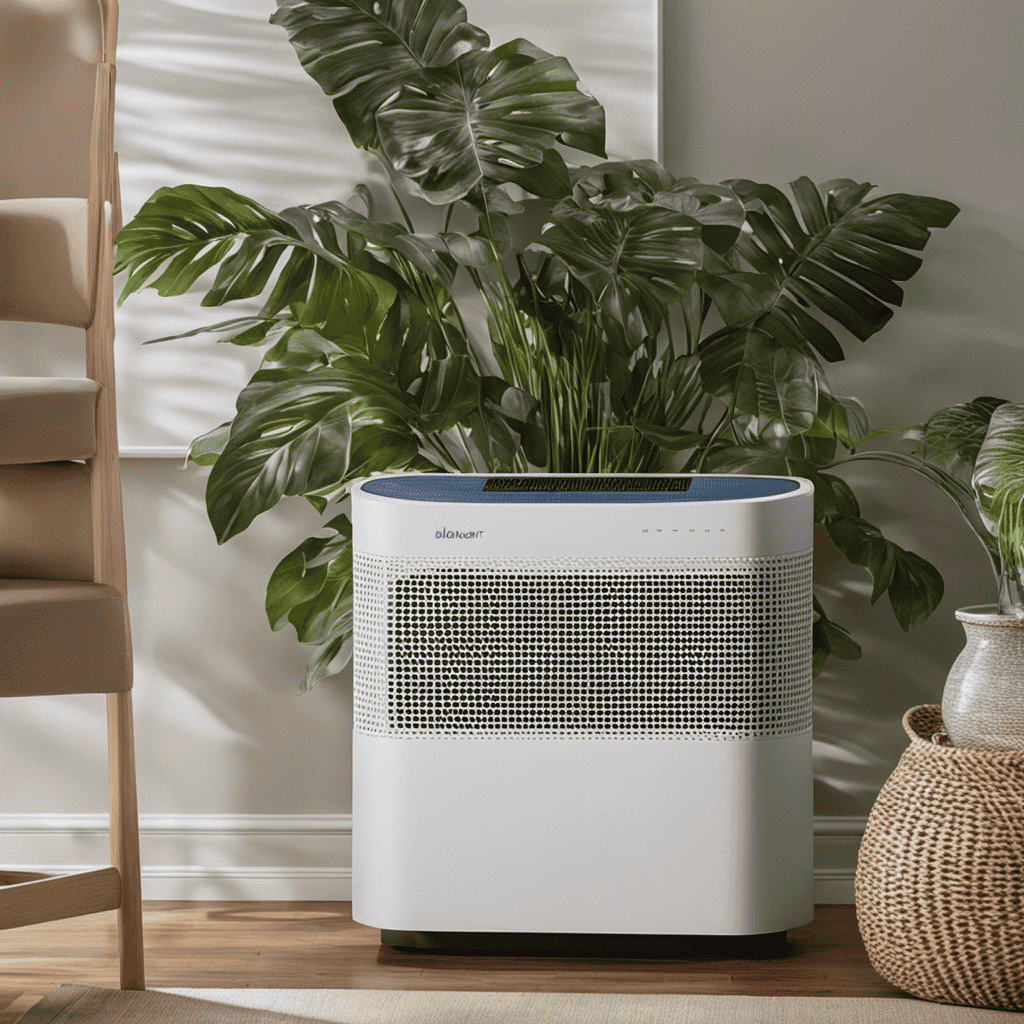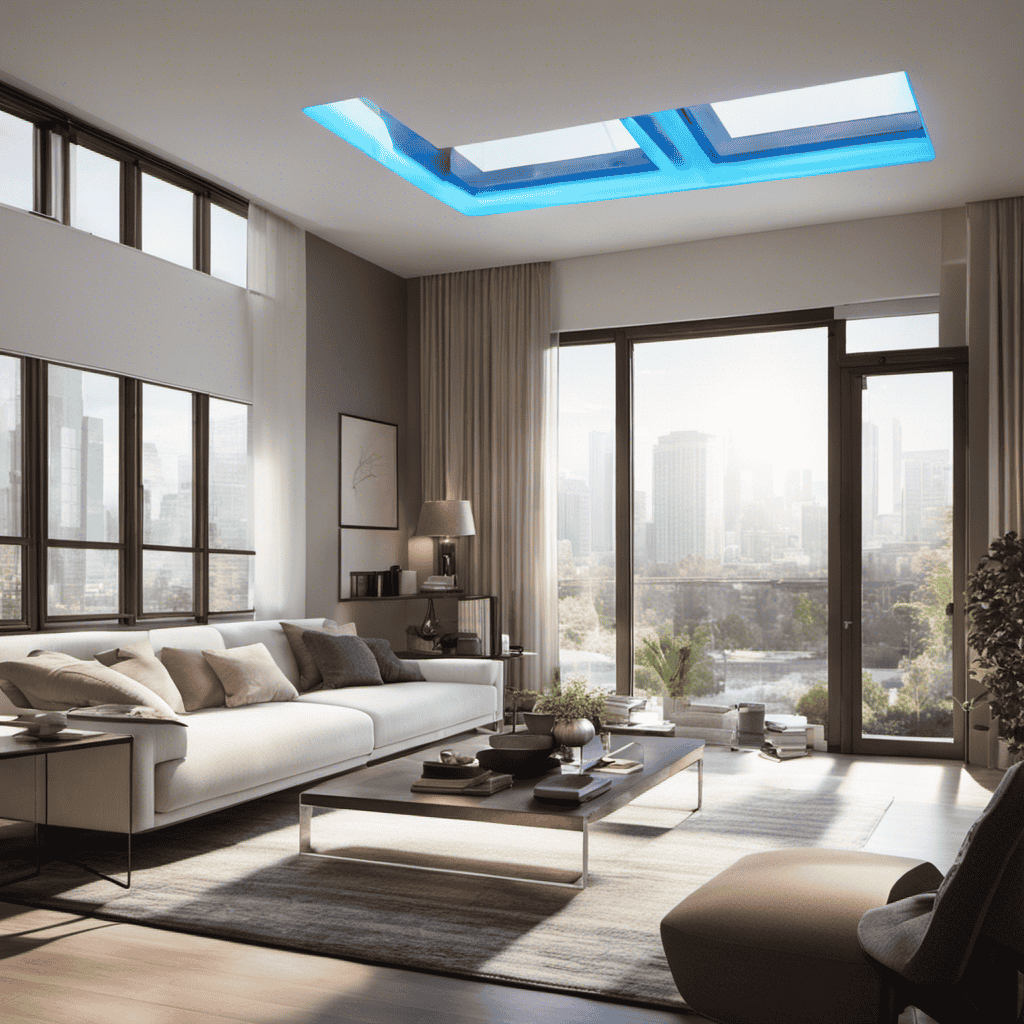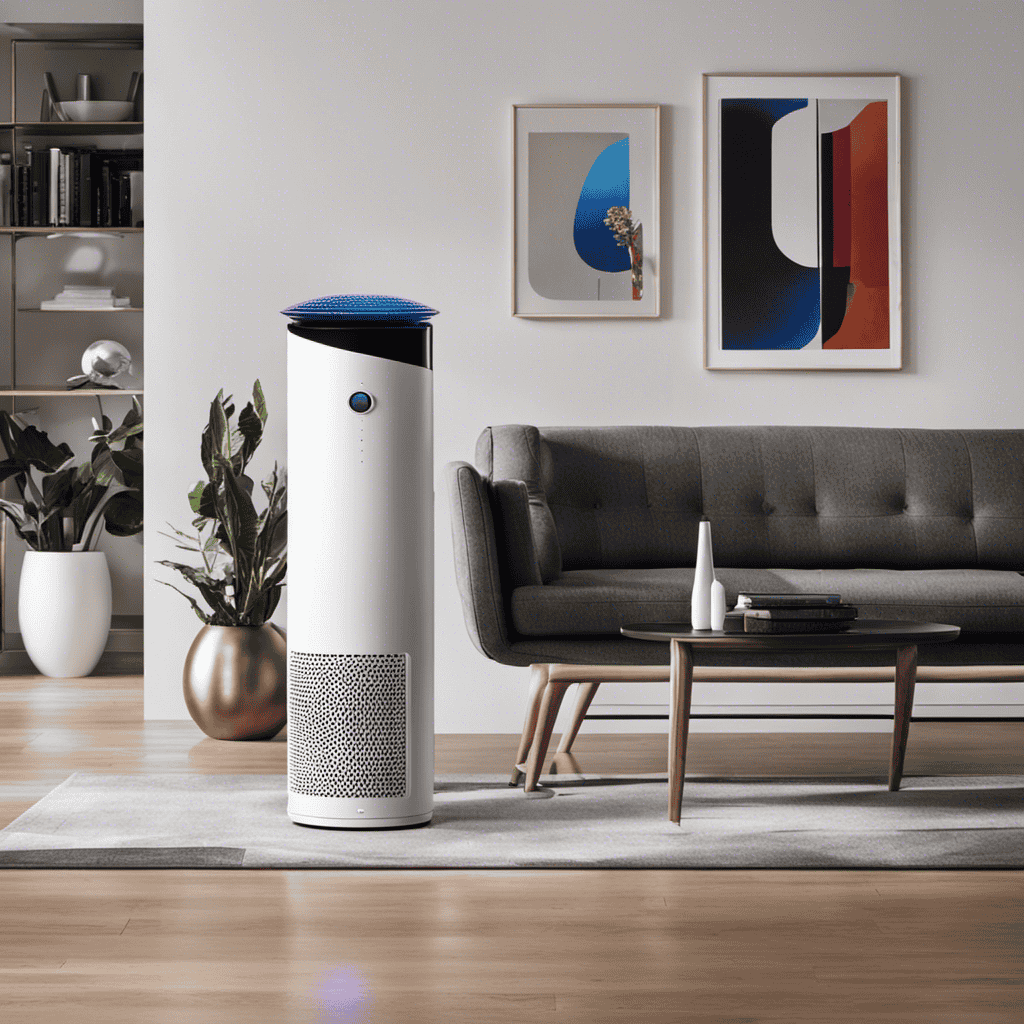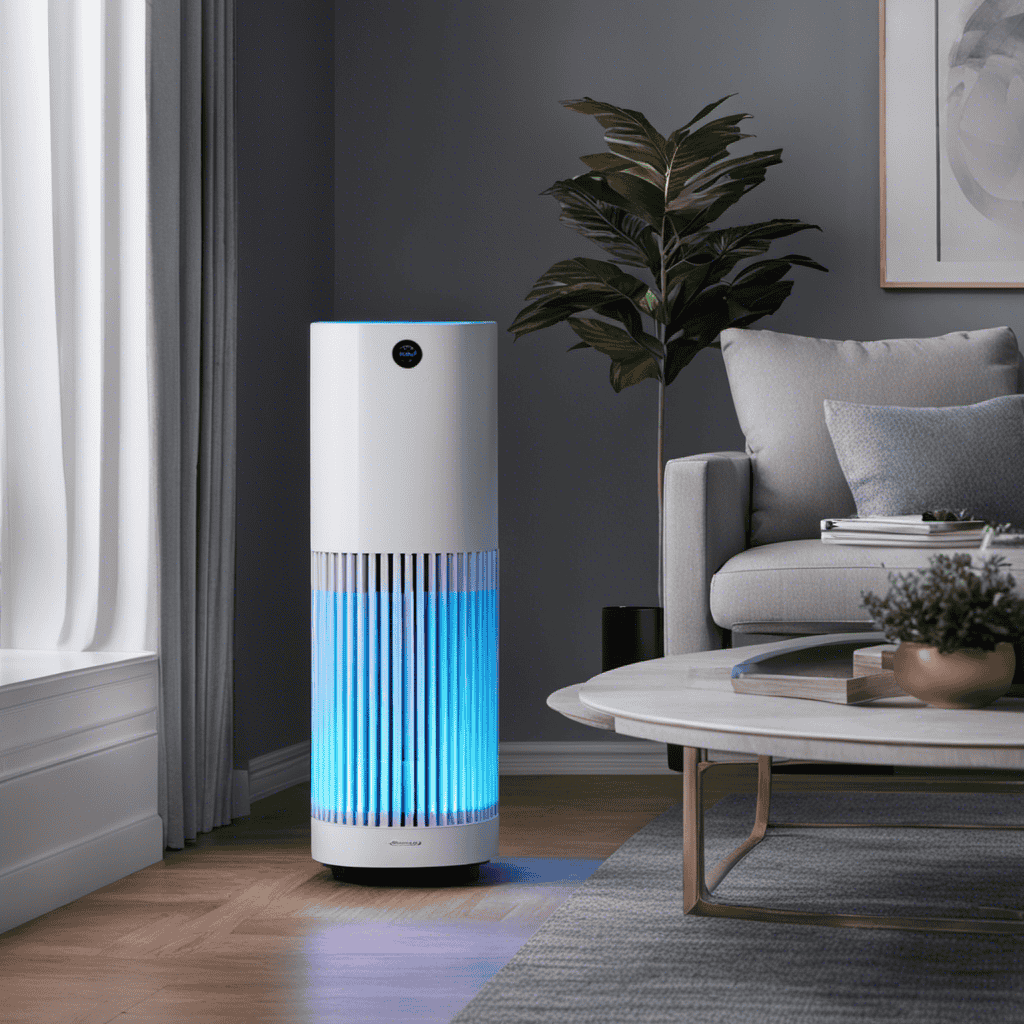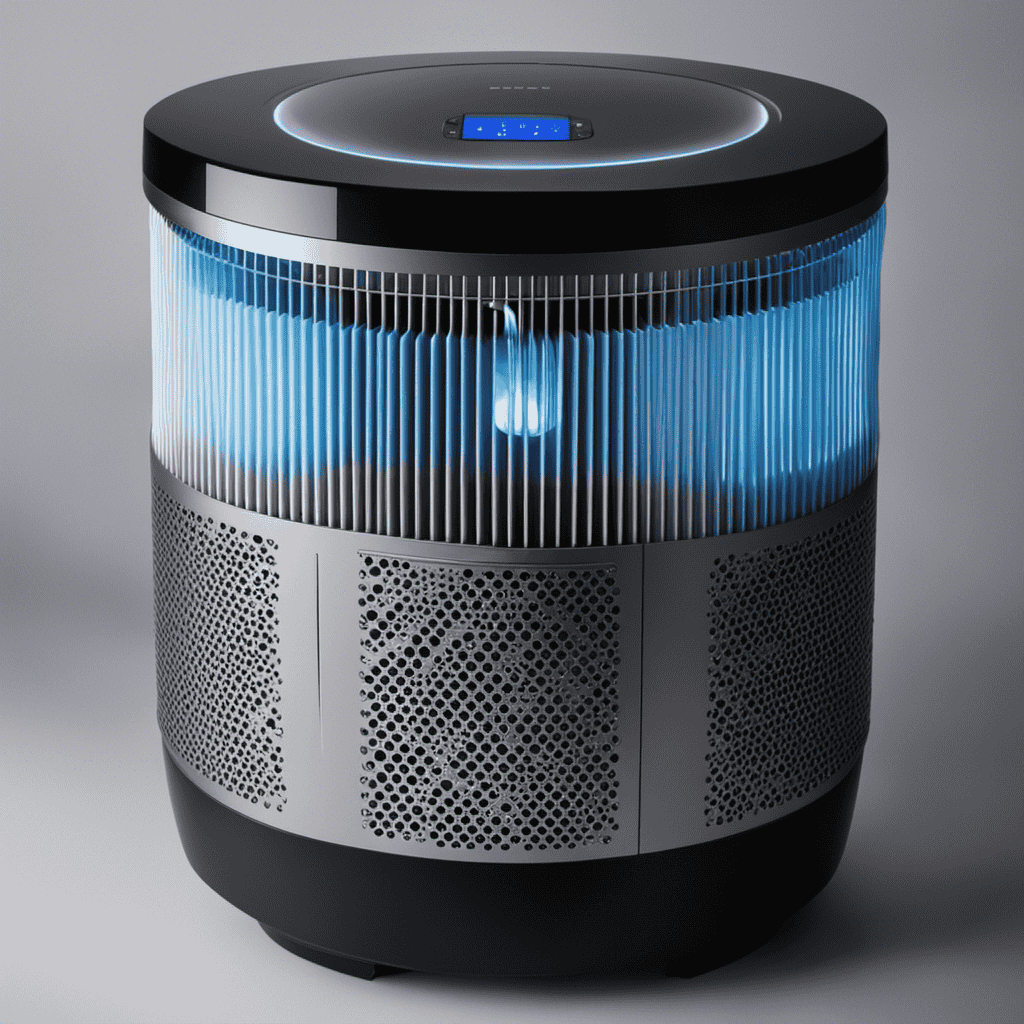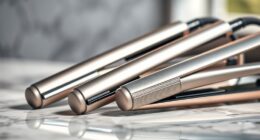Sitting in my full-of-dust house, sneezing from allergens, the moment came to finally take apart my Blueair air purifier. Get ready to learn the insider secrets for cleaning your air purifier and improving air quality in your home. Keep reading to discover why maintaining your air purifier is crucial for healthy living.
With determination in my eyes and tools in hand, I embarked on a journey to uncover the inner workings of this powerful device.
In this article, I will guide you through the step-by-step process of disassembling your Blueair air purifier, providing you with the knowledge and confidence to keep your home clean and fresh.
Let’s dive in!
Key Takeaways
- Regular cleaning and maintenance of the pre-filter is essential to improve air quality and prolong the lifespan of the air purifier.
- Proper disassembly and cleaning of the inner fan unit can help troubleshoot any issues with loose connections or damage.
- Troubleshooting fan issues such as noise, not working, excessive vibrations, overheating, and uneven airflow requires checking for loose connections, cleaning blades, ensuring proper power supply, and addressing any obstructions.
- Replacing the main HEPA filter and disassembling the control panel should be done carefully, following manufacturer’s instructions, to ensure proper functioning of the air purifier.
Tools Needed for Disassembly
To disassemble a Blueair air purifier, you’ll need a few tools. The disassembly process requires precision and attention to detail.
First, you’ll need a Phillips screwdriver, preferably a size #2, to remove the screws that hold the outer casing in place.
Next, a small flathead screwdriver will be necessary to pry open any clips or panels that may be securing the internal components.
Additionally, a pair of needle-nose pliers will come in handy for disconnecting any wire connectors or removing small screws.
It is important to handle the tools with care and follow the manufacturer’s instructions to avoid damaging any delicate parts.
Removing the Front Panel
Removing the front panel of this device is a simple process that requires a few basic steps.
To begin, you’ll need a screwdriver with a Phillips head. Start by locating the screws that secure the front panel in place. Typically, there are four screws, one in each corner. Use the screwdriver to carefully remove these screws.
Once the screws are removed, you can gently pull the front panel away from the device. Be careful not to force it or apply too much pressure as this could damage the panel. If you encounter any resistance, double-check that all screws have been removed.
With these tools and tips, you can easily remove the front panel of your Blueair air purifier.
Accessing and Cleaning the Pre-Filter
When it comes to maintaining the pre-filter of my Blueair air purifier, there are a few important steps that I follow.
First, I carefully remove the front panel to gain access to the pre-filter.
Then, I take out the pre-filter and give it a thorough cleaning to remove any accumulated dust and debris.
Regularly cleaning the pre-filter not only ensures optimal performance of the air purifier but also extends its lifespan by preventing clogs and reducing strain on the main filter.
Pre-Filter Maintenance Steps
Make sure you’re regularly cleaning and replacing the pre-filter to maintain the efficiency of your Blueair air purifier.
The pre-filter is the first line of defense against larger particles like dust, hair, and pet dander.
To clean the pre-filter, first, remove it from the air purifier by following the manufacturer’s instructions.
Gently vacuum the pre-filter to remove any loose debris.
If the pre-filter is heavily soiled, you can rinse it under running water and let it air dry before reinstalling it.
However, if the pre-filter is damaged or worn out, it’s time for a replacement.
Blueair recommends replacing the pre-filter every three to six months, depending on usage.
Replacing the pre-filter ensures that your air purifier continues to effectively capture airborne pollutants and maintain optimal performance.
Removing and Cleaning Pre-Filter
It’s important to regularly clean and replace the pre-filter in order to maintain the efficiency of your Blueair air purifier. The pre-filter is designed to capture larger particles such as dust, pet hair, and lint, preventing them from clogging the main filter.
Over time, the pre-filter can become dirty and less effective, reducing the overall performance of the air purifier. The lifespan of the pre-filter depends on the air quality and usage, but it is generally recommended to replace it every 3 to 6 months.
To clean the pre-filter, remove it from the air purifier and gently vacuum or rinse it under running water. Allow it to dry completely before reinstalling.
Regular pre-filter replacement and cleaning will ensure that your Blueair air purifier continues to provide clean and fresh air.
Benefits of Regular Cleaning
Regularly cleaning and replacing the pre-filter improves the efficiency and performance of your air purifier. Here are four reasons why maintaining a regular cleaning schedule is important:
-
Improved Air Quality: By removing dust, pollen, and other particles from the pre-filter, you ensure that the air purifier can effectively clean the air in your space. This leads to cleaner, healthier air for you to breathe.
-
Extended Lifespan: A clean pre-filter prevents dust and debris from clogging the internal components of the air purifier, which can cause it to work harder and potentially shorten its lifespan. Regular cleaning helps keep the purifier running smoothly for longer.
-
Optimal Performance: When the pre-filter is clean, the air purifier can operate at its highest efficiency, effectively capturing allergens and pollutants from the air. This means you’ll experience the full benefits of the purifier’s capabilities.
-
Cost Savings: By regularly cleaning and replacing the pre-filter, you can avoid costly repairs or having to replace the entire unit prematurely. Taking care of your air purifier ensures it continues to perform well without unnecessary expenses.
In order to achieve a deep clean, it is important to follow specific cleaning methods recommended by the manufacturer. These methods may include using a vacuum cleaner or washing the pre-filter with mild soap and water. It is also crucial to adhere to a regular cleaning schedule to maintain the air purifier’s efficiency and performance over time.
Disassembling the Inner Fan Unit
When it comes to disassembling the inner fan unit of a blueair air purifier, there are two key points to focus on.
The first is the fan removal technique. This involves carefully detaching the fan from its housing using the appropriate tools and following a specific sequence of steps.
The second point is troubleshooting the fan disassembly process. This requires identifying and addressing any potential issues that may arise during the disassembly process, such as stuck or damaged components.
Fan Removal Technique
To remove the fan from your Blueair air purifier, you’ll need to start by unplugging the device and removing the front panel.
Here is the step-by-step fan removal technique:
-
Locate the fan assembly: It is usually located behind the front panel of the air purifier.
-
Disconnect the fan power cable: Carefully unplug the cable connected to the fan assembly to ensure no electrical power is present.
-
Unscrew the fan assembly: Use a screwdriver to remove the screws securing the fan assembly in place.
-
Gently remove the fan assembly: Once the screws are removed, you can carefully detach the fan assembly from the air purifier.
With the fan removed, you can now move on to troubleshooting fan disassembly to identify and fix any issues that may be causing problems.
Troubleshooting Fan Disassembly
If you’re experiencing any issues with the fan assembly, you can troubleshoot it by checking for loose connections or signs of damage. One common problem is fan noise, which can be caused by a variety of factors such as worn bearings, loose blades, or debris buildup. To troubleshoot fan noise, start by inspecting the fan assembly for any loose connections. Make sure that all the screws and fasteners are securely tightened. Next, examine the blades for any signs of damage or misalignment. If the blades are damaged, they may need to be replaced. Additionally, check for any debris or dust buildup on the blades or inside the fan housing. Cleaning the blades and removing any obstructions can help reduce fan noise. Refer to the table below for additional tips and troubleshooting steps for fan assembly issues.
| Issue | Troubleshooting Steps |
|---|---|
| Fan Noise | – Check for loose connections. – Inspect blades for damage or misalignment. – Clean blades and remove any debris. |
| Fan Not Working | – Check power supply and connections. – Test the fan motor for continuity. – Replace the fan motor if necessary. |
| Excessive Vibrations | – Ensure the fan assembly is securely mounted. – Check for any loose or damaged components. – Balance the blades if needed. |
| Overheating | – Check for any blockages in the air intake or exhaust. – Clean or replace the air filters if necessary. – Ensure proper ventilation around the fan assembly. |
| Uneven Airflow | – Check for obstructions in the air intake or exhaust. – Adjust the fan speed settings if applicable. – Consider repositioning the fan for better airflow distribution. |
Removing and Replacing the Main HEPA Filter
You’ll need to carefully remove and replace the main HEPA filter in the blueair air purifier. Follow these steps for proper HEPA filter maintenance:
- Turn off the air purifier and unplug it from the power source to ensure safety.
- Locate the filter compartment on the back of the purifier and open it using the designated latch or button.
- Gently pull out the old HEPA filter and discard it properly.
- Take the new HEPA filter out of its packaging and place it into the filter compartment, making sure it fits snugly.
- Close the filter compartment securely and plug in the air purifier.
With the main HEPA filter replaced, we can now move on to taking apart the control panel to access the inner components of the blueair air purifier.
Taking Apart the Control Panel
Now that we have replaced the main HEPA filter, let’s move on to opening up the control panel to access the inner components. Disassembling the control panel is an essential step in troubleshooting control panel issues or accessing the electronics inside the air purifier. Follow these steps carefully to ensure a successful disassembly:
-
Unplug the air purifier from the power source for safety.
-
Locate the screws on the control panel. Use a screwdriver to remove these screws.
-
Gently pry open the control panel using a plastic opening tool or your fingers.
-
Once the control panel is open, you will have access to the inner components such as the circuit board, buttons, and connectors.
Remember to be cautious and gentle while disassembling the control panel to avoid damaging any parts. Take note of the position and orientation of the components for easier reassembly later.
Reassembling the Blueair Air Purifier
To successfully reassemble the control panel, align the circuit board, buttons, and connectors carefully. Here are some reassembling tips to help you avoid common mistakes:
-
Begin by identifying the correct position for the circuit board. Look for any alignment marks or notches that indicate the proper orientation.
-
Carefully align the buttons with their corresponding openings on the control panel. Make sure they are securely in place before proceeding.
-
Connect the various connectors back to their respective ports on the circuit board. Take note of any color-coded cables or labels to ensure correct placement.
-
Double-check all connections and make sure they are secure. A loose connection can lead to malfunctioning or non-responsive buttons.
Following these reassembling tips will help you successfully put together the control panel of your Blueair Air Purifier without any common mistakes.
Frequently Asked Questions
How Often Should I Clean the Pre-Filter?
I clean the pre-filter of my Blueair Air Purifier every 3-6 months. Signs of a dirty pre-filter include reduced airflow and a build-up of dust and debris. Regular cleaning ensures optimal performance.
Can I Use Any Type of Cleaning Solution to Clean the Pre-Filter?
I can use various cleaning solutions to clean the pre-filter of my Blueair Air Purifier. It is important to choose a solution that is safe for the filter material and effective in removing dirt and debris.
Is It Necessary to Wear Gloves While Disassembling the Air Purifier?
Gloves are necessary when disassembling the air purifier to ensure safety. Safety precautions should always be taken to protect hands from potential hazards. It is important to prioritize personal protection.
Can I Reuse the Main HEPA Filter After Cleaning It?
Yes, the main HEPA filter can be reused after cleaning. It is important to use a cleaning solution specifically designed for the pre-filter to ensure proper maintenance and optimal performance of the air purifier.
Are There Any Special Precautions I Should Take While Handling the Control Panel During Disassembly?
When disassembling a Blueair Air Purifier, it is important to take special precautions while handling the control panel. I recommend wearing gloves to protect yourself and prevent any damage to the control panel.
Conclusion
In conclusion, disassembling a Blueair air purifier requires attention to detail and the right tools. By carefully following the steps outlined in this guide, you can access and clean the pre-filter, disassemble the inner fan unit, remove and replace the main HEPA filter, and take apart the control panel.
Remember to approach each step with precision to ensure a thorough cleaning process. With a little effort and the right technique, you’ll have your Blueair air purifier running like new again.
